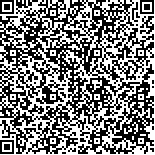| 引用本文: | 吴友苹,徐聪,顾利强,林晓波,陈颖,徐潘生,缪静,张升.雾化吸入盐酸肾上腺素注射液的过敏性和刺激性研究[J].中国现代应用药学,2023,40(19):2652-2658. |
| WU Youping,XU Cong,GU Liqiang,LIN Xiaobo,CHEN Ying,XU Pansheng,MIAO Jing,ZHANG Sheng.Allergic and Irritation Study of Nebulized Inhaled Epinephrine Hydrochloride Injection[J].Chin J Mod Appl Pharm(中国现代应用药学),2023,40(19):2652-2658. |
|
| |
|
|
| 本文已被:浏览 600次 下载 361次 |

码上扫一扫! |
|
|
| 雾化吸入盐酸肾上腺素注射液的过敏性和刺激性研究 |
|
吴友苹1, 徐聪2, 顾利强2, 林晓波2, 陈颖2, 徐潘生2, 缪静1, 张升2
|
|
1.浙江大学医学院附属儿童医院, 国家儿童健康与疾病临床医学研究中心, 杭州 310003;2.杭州医学院, 杭州 310013
|
|
| 摘要: |
| 目的 通过豚鼠雾化吸入给予盐酸肾上腺素注射液,评价临床超说明书给予盐酸肾上腺素注射液的安全性。方法 通过建立雾化给药药物浓度检测方法,确定吸入给药实际给药量。以临床使用盐酸肾上腺素给药频次与剂量结合过敏性试验评价方法,采用豚鼠全身主动过敏试验方案,评价盐酸肾上腺素注射液雾化吸入后对豚鼠产生的全身过敏反应及呼吸系统毒性反应。32只豚鼠按体质量随机分成4组:阴性对照组(等体积的生理盐水)、阳性对照组(致敏剂量:20 mg·kg-1卵白蛋白)、低剂量组(致敏剂量:15.5 μg·kg-1盐酸肾上腺素)和高剂量组(致敏剂量:31 μg·kg-1盐酸肾上腺素)。各组激发剂量是致敏剂量的2倍,激发时观察过敏反应症状,激发后采集血液与肺泡灌洗液,全血用于检测血液学,分离血清和肺泡灌洗液用于检测IgE。动物解剖后取支气管与肺脏组织做组织学检测与免疫组化。结果 使用雾化装置给予豚鼠盐酸肾上腺素在给药3.95 min时可达到临床等效剂量。各组豚鼠在致敏给药期间体质量正常增长,无明显异常反应。激发时,阳性对照组豚鼠出现强阳性过敏反应,阴性对照组、低剂量组和高剂量组豚鼠均无明显过敏反应。与阴性对照组比较,阳性对照组豚鼠血液中嗜酸性粒细胞显著升高(P<0.05),血清和肺泡灌洗液中IgE含量明显增加(P<0.05或P<0.01);组织病理学结果显示阳性对照组豚鼠激发后肺组织内出现炎性细胞浸润,肺泡内出现大量红细胞和渗出液;免疫组化结果提示阳性组豚鼠肺组织内炎性症状与B淋巴细胞增多相关。而低剂量组和高剂量组豚鼠血液学指标、血清IgE含量、免疫组化和组织学检查结果均与阴性对照组无明显差异。结论 盐酸肾上腺素注射液经雾化给予豚鼠不发生过敏反应,且未产生呼吸系统毒性。盐酸肾上腺素注射液雾化吸入是安全可行的。 |
| 关键词: 肾上腺素注射液 雾化吸入 安全性 主动过敏 呼吸系统 |
| DOI:10.13748/j.cnki.issn1007-7693.20230392 |
| 分类号:R965.3 |
| 基金项目:浙江省医药卫生科技计划项目(2021KY634,2020KY529);浙江省教育厅一般科研项目(Y202249207) |
|
| Allergic and Irritation Study of Nebulized Inhaled Epinephrine Hydrochloride Injection |
|
WU Youping1, XU Cong2, GU Liqiang2, LIN Xiaobo2, CHEN Ying2, XU Pansheng2, MIAO Jing1, ZHANG Sheng2
|
|
1.Children's Hospital, Zhejiang University School of Medicine, National Clinical Research Center for Child Health, Hangzhou 310003, China;2.Hangzhou Medical College, Hangzhou 310003, China
|
| Abstract: |
| OBJECTIVE To evaluate the safety of epinephrine hydrochloride injection(EHI) given by nebulized inhalation in guinea pigs with the off-label drug use. METHODS The actual dose of inhalation administration was determined by establishing a nebulized administration drug concentration assay. The systemic allergic reactions and respiratory toxicity of EHI after nebulized inhalation were evaluated by guinea pigs using the allergy test protocol with the combination of frequency and dose of epinephrine hydrochloride administration and allergy test. Thirty-two guinea pigs were randomly divided into 4 groups according to body weight: negative control group(equal volume of saline), positive control group(sensitizing dose: 20 mg·kg-1 ovalbumin), low dose group(sensitizing dose: 15.5 μg·kg-1 EHI) and high dose group(sensitizing dose: 31 μg·kg-1 EHI). The excitation dose of each group was two times the sensitization dose, at the time of excitation, the symptoms of allergic reaction were observed. After excitation, blood and alveolar lavage fluid were collected, whole blood was collected for hematological testing and isolated serum and alveolar lavage fluid were used for IgE testing. Bronchial and lung tissues were taken for histological testing and immunohistochemistry after dissection. RESULTS Using a nebulizer device to administer EHI to guinea pigs at a clinically equivalent dose at 3.95 min of administration. The guinea pigs in all groups showed normal weight gain during sensitization administration. At the time of excitation, the guinea pigs in the positive control group showed strong positive allergic reactions, while the guinea pigs in the negative control group, low dose group and high dose group showed no significant allergic reactions. Compared with the negative control group, eosinophils in the blood of the positive control guinea pigs were significantly higher(P<0.05) and the IgE content in the serum and alveolar lavage fluid was significantly increased(P<0.05 or P<0.01). Histopathological results showed that inflammatory cells infiltrated in the lung tissue of the positive control guinea pigs after excitation, and a large number of erythrocytes and exudate appeared in the alveoli. The immunohistochemical indiacated that the inflammatory symptoms in the lung tissues of the positive guinea pigs were associated with an increase in B lymphocytes. The hematological indexes, serum IgE content, immunohistochemical and histological examination results of guinea pigs in the low and high dose groups were not significantly different from those of the negative control group. CONCLUSION No allergic reaction and no respiratory toxicity occurred in guinea pigs given EHI by nebulization, and the administration of EHI by nebulized inhalation off-label drug use is safe and feasible. |
| Key words: epinephrine hydrochloride injection nebulized inhalation safety active systemic anaphylaxis respiratory system |
|
|
|
|
